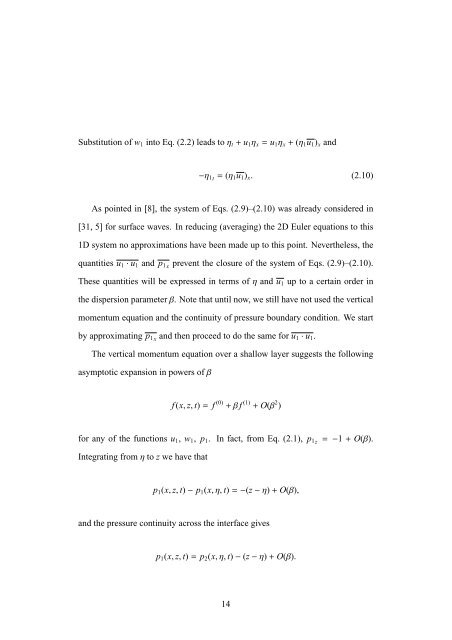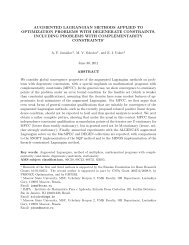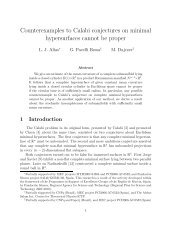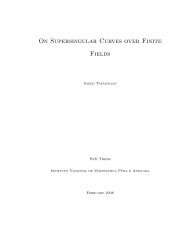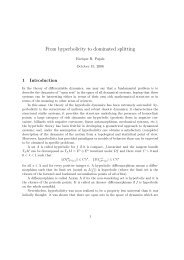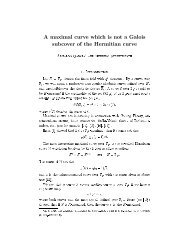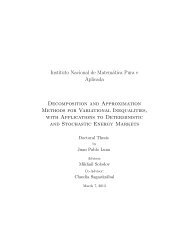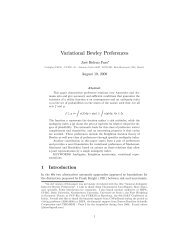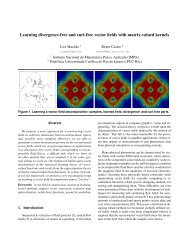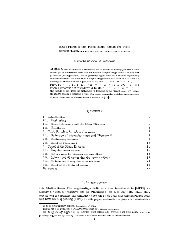a reduced model for internal waves interacting with submarine ...
a reduced model for internal waves interacting with submarine ...
a reduced model for internal waves interacting with submarine ...
You also want an ePaper? Increase the reach of your titles
YUMPU automatically turns print PDFs into web optimized ePapers that Google loves.
Substitution of w 1 into Eq. (2.2) leads toη t + u 1 η x = u 1 η x + (η 1 u 1 ) x and<br />
−η 1 t= (η 1 u 1 ) x . (2.10)<br />
As pointed in [8], the system of Eqs. (2.9)–(2.10) was already considered in<br />
[31, 5] <strong>for</strong> surface <strong>waves</strong>. In reducing (averaging) the 2D Euler equations to this<br />
1D system no approximations have been made up to this point. Nevertheless, the<br />
quantities u 1· u 1 and p 1 x prevent the closure of the system of Eqs. (2.9)–(2.10).<br />
These quantities will be expressed in terms ofηand u 1 up to a certain order in<br />
the dispersion parameterβ. Note that until now, we still have not used the vertical<br />
momentum equation and the continuity of pressure boundary condition. We start<br />
by approximating p 1 x and then proceed to do the same <strong>for</strong> u 1· u 1 .<br />
The vertical momentum equation over a shallow layer suggests the following<br />
asymptotic expansion in powers ofβ<br />
f (x, z, t)= f (0) +β f (1) + O(β 2 )<br />
<strong>for</strong> any of the functions u 1 , w 1 , p 1 . In fact, from Eq. (2.1), p 1 z<br />
=−1+O(β).<br />
Integrating fromηto z we have that<br />
p 1 (x, z, t)− p 1 (x,η, t)=−(z−η)+O(β),<br />
and the pressure continuity across the interface gives<br />
p 1 (x, z, t)= p 2 (x,η, t)−(z−η)+O(β).<br />
14


